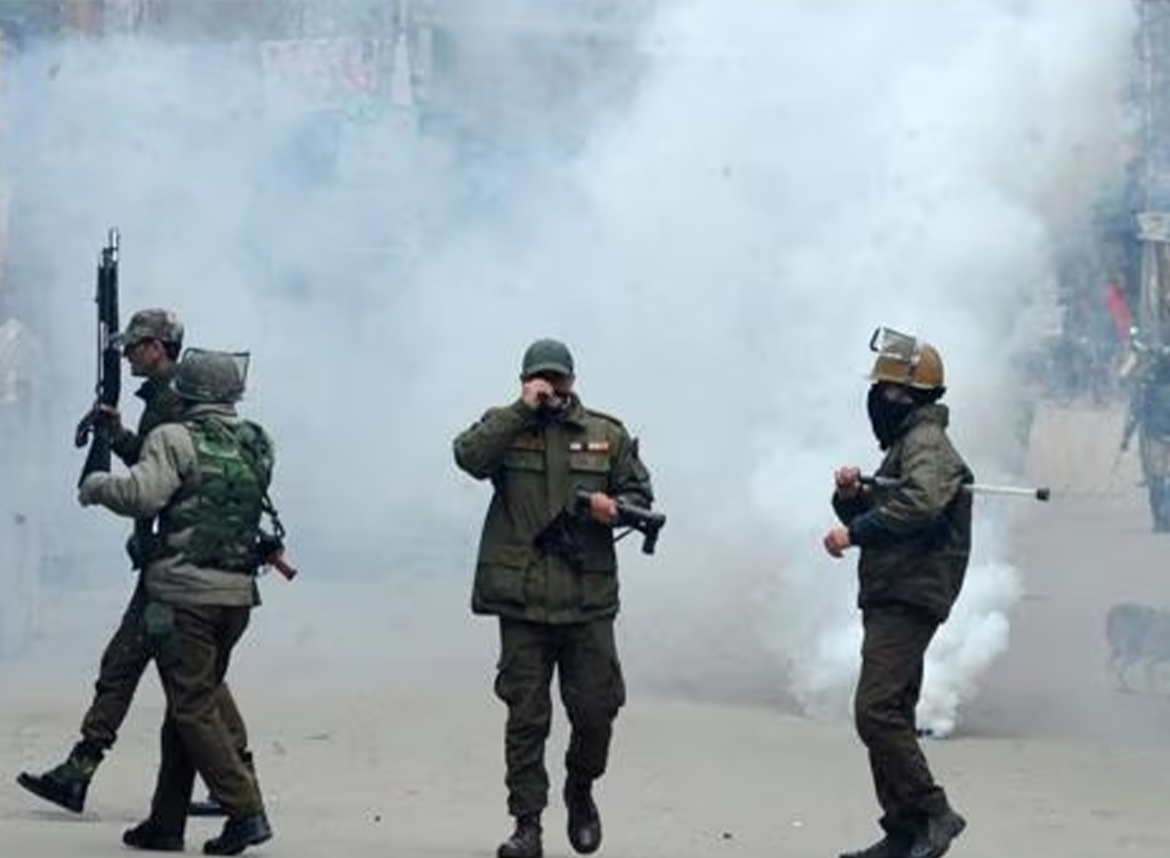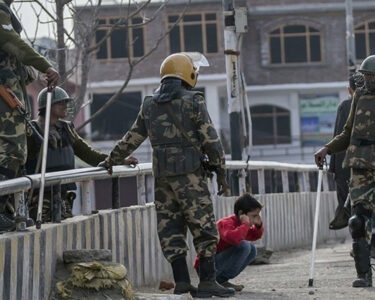Source
The Kashmir conflict has persisted as a contentious issue since 1947, marked by historical complexities, political maneuvering, and human rights concerns. Rooted in the partition of British India, this dispute has long been exacerbated by Indian policies that have alienated the Kashmiri population, fueling local resentment and a prolonged struggle for self-determination.
When British India was divided into India and Pakistan, the princely states, including Jammu and Kashmir, were given the choice to join either nation or remain independent. Kashmir, with a Muslim-majority population but a Hindu ruler, Maharaja Hari Singh, found itself at a crossroads. The Maharaja initially hesitated, hoping to maintain Kashmir’s autonomy. However, the situation quickly deteriorated as armed tribal militias from Pakistan entered Kashmir in support of the population’s wish to join Pakistan.
In response, Maharaja Hari Singh sought military help from India, agreeing to an Instrument of Accession under the condition of eventual self-determination for Kashmiris, a condition India initially accepted. However, despite promises at the United Nations and to the people of Kashmir, India delayed and eventually dismissed the plebiscite that would have allowed Kashmiris to decide their future, fueling tensions in the region.
The United Nations, recognizing the gravity of the issue, passed resolutions in 1948 and 1949 calling for a plebiscite in Kashmir. But as Cold War politics played a role, India’s stance hardened, sidelining the UN’s recommendations. Over time, India entrenched its control, integrating Kashmir further into its political framework and denying Kashmiris the promised right to self-determination. While Pakistan withdrew some of its forces as a gesture to comply with UN conditions, India became increasingly resistant to allowing a plebiscite. This decision left a bitter legacy and established a sense of betrayal among Kashmiris that would carry over generations.
In the 1980s and 1990s, Kashmir witnessed a new phase of unrest. An armed insurgency emerged, driven by local grievances and disillusionment with Indian governance. Allegations of election manipulation and rights abuses led to a massive surge in resentment. India responded with increased military presence in Kashmir, escalating the situation into a conflict marked by frequent human rights violations. Civilians, often caught between insurgent groups and Indian security forces, suffered extrajudicial killings, forced disappearances, and reports of torture. Instead of addressing local grievances, India clamped down on the region with harsh measures, instilling a deep sense of alienation in the people of Kashmir.
A turning point came in 2019 when the Indian government unilaterally revoked Article 370, which granted limited autonomy to Jammu and Kashmir. Article 370 had allowed Kashmir its constitution and legislative control over local matters. By revoking it, India effectively removed the region’s special status and bifurcated it into two union territories, Jammu and Kashmir, and Ladakh. The move was seen by many as a heavy-handed attempt to tighten India’s grip on the region, sparking outrage in Kashmir and criticism internationally. Following the revocation, Indian authorities imposed severe restrictions, including an unprecedented communication blackout, curfews, and mass detentions of political leaders. These measures underscored India’s approach of force over diplomacy, reinforcing the sense of disenfranchisement and mistrust among Kashmiris.
Since 2019, human rights organizations have reported on the scale of violations that Kashmiris continue to face. Arbitrary detentions, harassment, and restricted freedoms of expression and movement are routine, with reports of abuse by security forces frequently surfacing. Indian authorities justify these measures as counter-terrorism efforts, but international watchdogs argue that these restrictions often target civilians. Women in Kashmir report harassment by security personnel, and the lives of children are affected by violence, leaving a lasting impact on an entire generation. Independent investigations into these abuses are rare, and the region remains closed to scrutiny, with journalists facing intimidation and censorship for reporting on the ground realities. This ongoing repression prevents any meaningful accountability, leaving the people of Kashmir to endure systemic injustices.
Meanwhile, India’s actions appear aimed at altering the region’s demographic and cultural landscape. With the revocation of Article 35A, which previously limited land ownership to locals, there is widespread concern among Kashmiris about demographic changes. These fears are fueled by reports of Indian policies that encourage outsiders to settle in the region, seen by many as an effort to dilute the Muslim-majority population of Jammu and Kashmir. Economic stagnation further aggravates the situation, as the conflict and frequent shutdowns impede the development of basic infrastructure and prevent economic opportunities. Tourism, a significant source of income for the region, has been hard-hit by the security situation, leaving many Kashmiris without steady means of livelihood.
India’s control of Kashmir has increasingly been accompanied by narratives that paint the issue as an internal matter, shutting down external scrutiny. But the international community remains concerned, as Kashmir represents a flashpoint between two nuclear powers. Pakistan, which shares cultural and religious ties with Kashmir and administers its own part of the region, continues to call for international intervention to uphold Kashmiris’ rights to self-determination. The involvement of China, which claims portions of Ladakh, further complicates the geopolitical dynamics. Yet, most countries, while aware of the human rights abuses, avoid direct confrontation, often urging India and Pakistan to find a bilateral solution.
The Kashmir conflict remains unresolved due to India’s steadfast approach, which emphasizes territorial control over the rights of the Kashmiri people. Resolving this conflict requires addressing the aspirations of the Kashmiri population, who have long been marginalized in the ongoing dispute between India and Pakistan. Diplomatic dialogue, along with a genuine commitment to respect human rights and local autonomy, is essential for peace. Ignoring the voices of Kashmiris will only exacerbate the unrest, keeping the region in a cycle of violence and suffering.
India’s policies in Kashmir illustrate the challenges of imposing control over a region with a distinct identity, one that has persistently demanded recognition and respect. Kashmiris, caught in a struggle over political control, are often denied basic freedoms and subjected to a militarized environment. For genuine peace, any resolution must prioritize the well-being and wishes of the Kashmiri people rather than territorial ambitions, or the dispute will continue to destabilize the region and fuel discontent among its people. The international community, while cautious, must recognize that Kashmir’s future depends on supporting the rights of its people over geopolitical interests. Until then, the conflict will remain an open wound, symbolizing the consequences of repression and the unfulfilled promise of self-determination.




